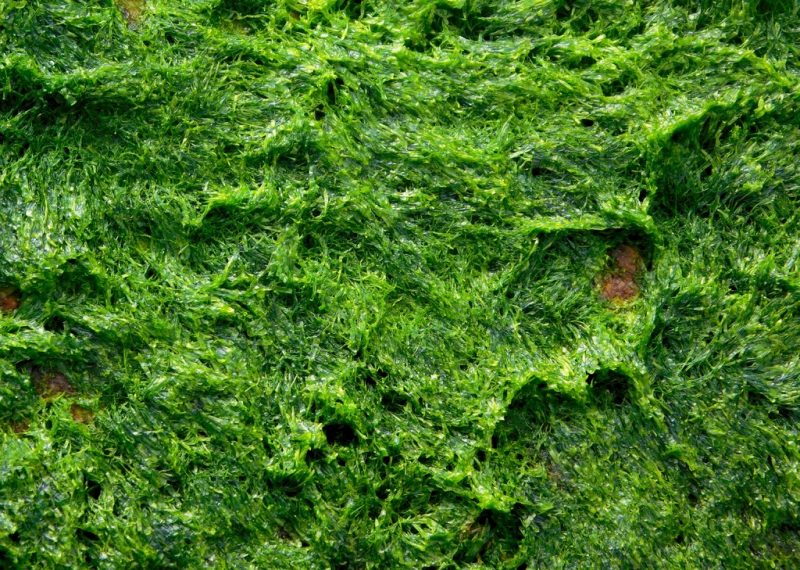Learning how to get rid of green algae on your seeding soil is extremely important if your goal is to create a wide array of greens in your backyard garden. When you start plants from seed indoors, you’re setting yourself up for a brilliant yet budget-friendly way to take your gardening experience to the next level. To ensure success, you’ll only need a few things to get started – soil, water, food, light, and seeds.
However, just like everything else in life, there are a few challenges to contend with as you grow your seeds indoors. One of the most common ones is how you can remove the green algae that are growing on the seed starting mix’s surface.

This problem isn’t surprising for those who are using peat-based mixes for seed starting. Thankfully, green algae growth is very easy to prevent and remove.
What is Green Algae?
In case you’re not aware, green algae happen to be an informal group of eukaryotic organisms that mainly consists of chlorophyll. You can mostly find green algae in freshwater and they present themselves in various forms such as unicellular flagellates.
These organisms tend to thrive on your seeding soil when the area is humid or muggy. The moment you spot a bloom of green, brown, or pink sticky material across the surface of the seed starting mix, you’re looking at algae.
Although green algae won’t choke the life out of your planted seed right away, it can trigger some problems because it competes with your plant’s access to the water and nutrients in the soil.
How to Get Rid of Green Algae On Your Seeding Soil in 3 Steps
If you see algae on your seed starting mix, you might be tempted to panic. The truth is, you don’t have to worry. This problem can be easily dealt with as long as you follow these steps:
Step #1: Grab a small tool
Clearing up any trace of green algae on your seeding soil will require you to use a small tool like a pencil or a chopstick to break up the algae layer.
Step #2: Use the tool to scrape off the surface of the soil
The key is to keep the soil from staying soggy. You can do this by using a small tool to gently scrape off the affected area. You can also choose to rough up the seeding soil so that it won’t become an ideal breeding ground for green algae.
Step #3: Sprinkle cinnamon powder on the soil
After successfully breaking up the layer of algae, you may use an effective home ready to prevent their growth. Simply sprinkle some cinnamon powder on the seeding soil and you’re all set.
Tips to Prevent Algae Growth
Preventing algae growth is anything but complicated. Check out these tips:
Tip #1: Choose high-quality seed starter soil
It all starts with you choosing a seed starter soil that’s of good quality and not just settling for garden soil. Garden soil tends to contain spores and disease that may affect your plant.
Tip #2: Water properly
You only need to water the soil when the surface is almost dry. Avoid allowing your seedlings to sit and stay in a pool of water.
Tip #3: Remove your humidity dome for an hour a day
Are you using a humidity dome? If you are, make sure that you allow condensation to evaporate. You can do this by removing the humidity dome once per day for about an hour.
Tip #4: Replace peat with fine bark dust
Did you know that peat pots, as well as peat mix, are more likely to have green algae grow on them? For this reason, it’s best to use fine bark dust to replace your peat starter mix. Keep in mind that using mixes with high peat proportions is a big no-no.
Tip #5: Allow your seedlings to get enough sunlight
One of the reasons why green algae can thrive on your seeding soil is the fact that your seedlings don’t get enough sunlight. Move your pots to an area that’s bright and sunny. If this isn’t possible, consider using plant lights.
Grow Your Plants Inside a Hobby Greenhouse!
Do yourself a favor by growing your precious plants inside a hobby greenhouse. In case you’re not aware, greenhouse gardening offers wonderful benefits for your plants and for you!
Benefit #1: You can manipulate your plants’ growing environment
Since the hobby greenhouse is an enclosed space, it will be easier for you to control the temperature, as well as the humidity levels inside it. You can even introduce some beneficial insects that include minute pirate bugs, lady beetles, and a whole lot more.
Benefit #2: Protection against harsh weather conditions
You won’t have to worry about the effects of inclement weather on your plants if you grow them inside a hobby greenhouse. No need to make emergency preparations to protect your plants from strong winds, heavy rains, and snow.
Benefit #3: Keeps the bad bugs and animals away
The hobby greenhouse serves as a protective barrier that keeps the destructive bugs and animals at bay.
Conclusion
Now that you’ve finally figured out how to get rid of green algae on your seeding soil, it’s time to give greenhouse gardening a try. You won’t be disappointed with the results.
